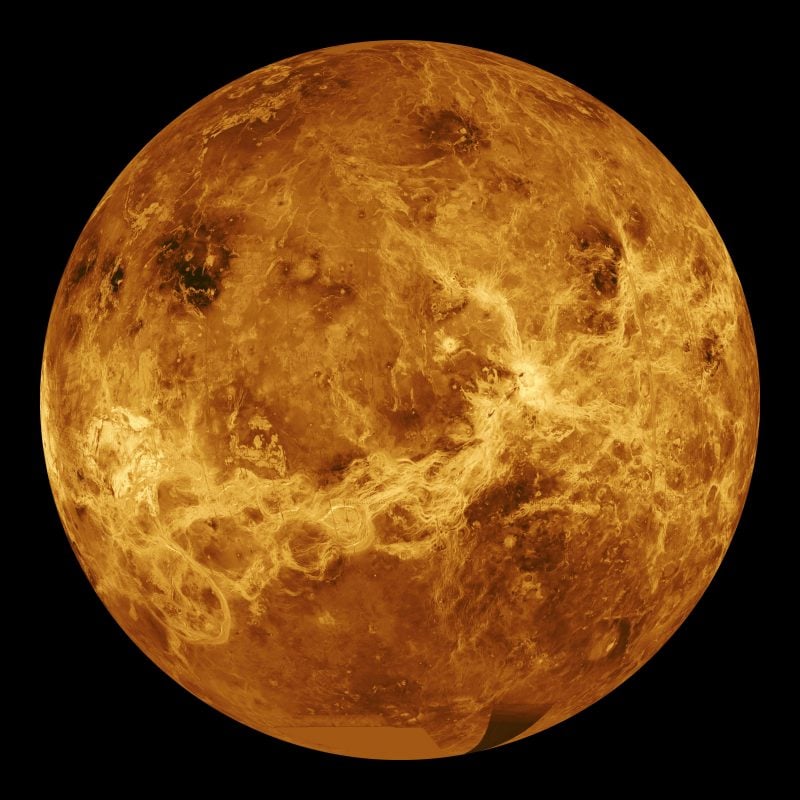Talk about using old data for a new purpose! Researchers re-examining information from the completed NASA Magellan mission found signs of what could be "heavy metal" frost on the hell-like surface. What the researchers saw in radio-wave reflectance is the highlands appear brighter, with dark spots in the tallest locations.
What substance exactly is causing the patches on the surface is unknown, and it is extremely hard to make predictions given the difficulty of simulating Venus' 900-degree Fahrenheit (500-degree Celsius) surface temperature, which is also 90 times Earth's air pressure at sea level.
"Like on Earth, the temperature changes with elevation," stated Elise Harrington, an Earth sciences undergraduate at British Columbia's Simon Fraser University who led the research. "Among the possibilities on Venus are a temperature dependent chemical-weathering process or heavy metal compound precipitating from the air – a heavy metal frost."
[caption id="attachment_115506" align="alignnone" width="493"]
Venus' volcano Sapas Mons, which was imaged by the Magellan mission in 1991. Credit: NASA[/caption]
Scrutiny of a previously examined area on Venus, the Odva Regio highlands, saw a low radar reflection at 2,400 meters (7,900 feet), which progressively gets brighter until dark spots begin appearing and reflections drop at 4,700 meters (15,400 meters).
While previous research spotted a few of these patches, Harrington and supervisor Allan Treiman (Lunar and Planetary Institute) saw hundreds. There's no radar-imaging spacecraft in orbit around Venus right now, but the authors hope that the finding will generate more interest in this planet. (Of note, the European Space Agency's Venus Express is finishing up a mission there now, which included several daring
atmosphere-skimming maneuvers
earlier this year.)
The
research was presented
at the Geological Society of America meeting in Vancouver, British Columbia.
Source:
Geological Society of America
 Universe Today
Universe Today
